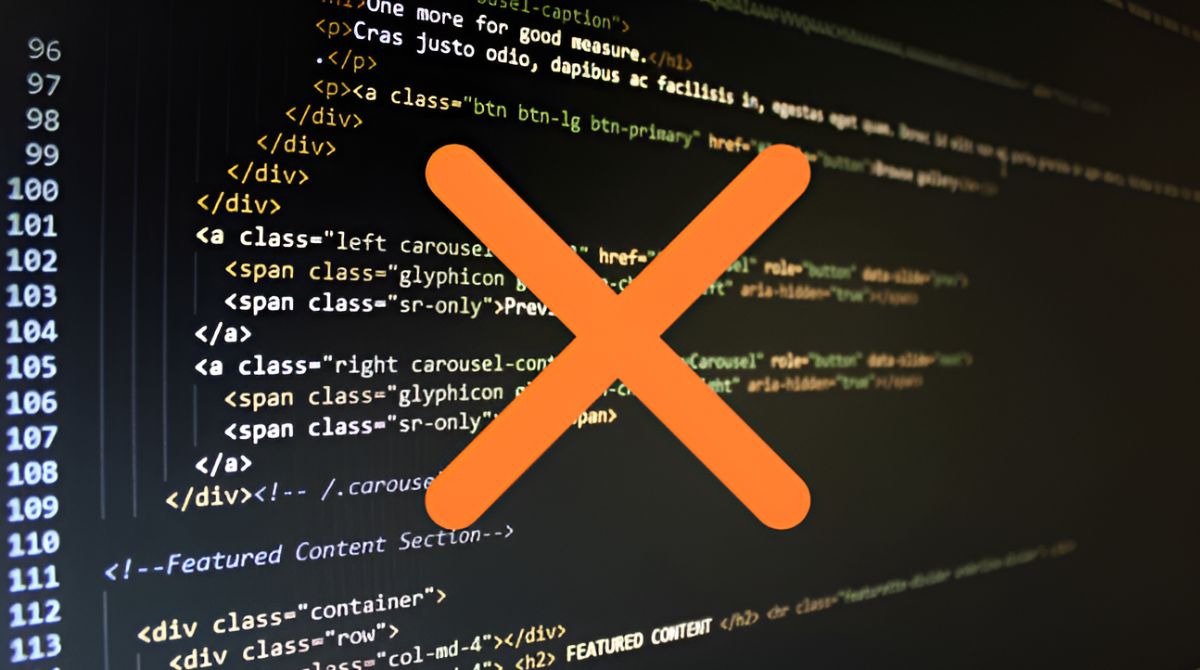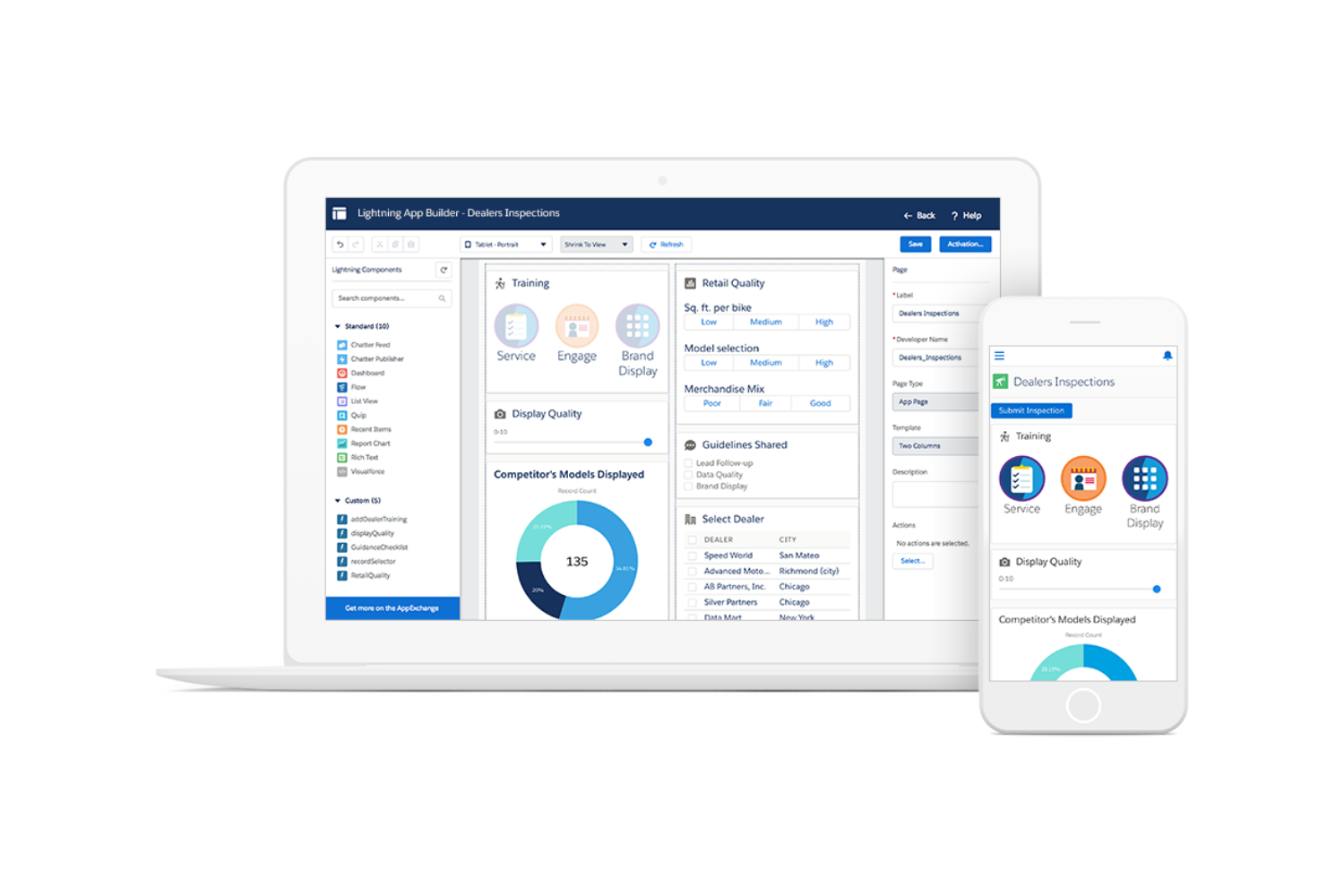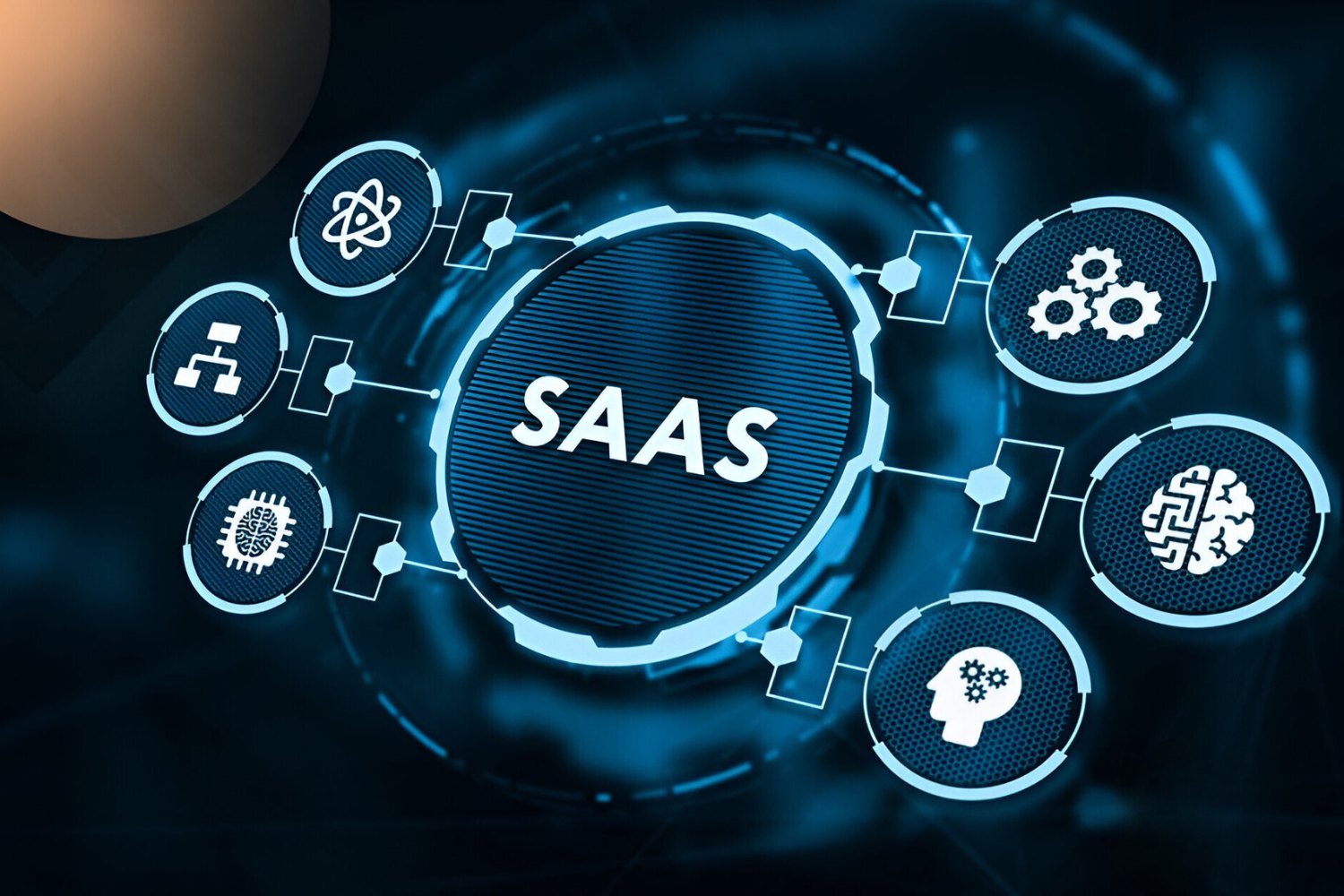Introduction
Welcome to this comprehensive guide on how to create a SaaS (Software as a Service) application. In today’s digital era, SaaS applications have become increasingly popular as they offer convenient and accessible solutions for businesses and individuals across various industries. Whether you are a developer, entrepreneur, or someone looking to bring your innovative idea to life, this guide will provide you with valuable insights and practical steps to successfully create your own SaaS application.
SaaS applications are cloud-based software products that are delivered over the internet to users on a subscription basis. Unlike traditional software, SaaS applications do not require installation, as they are accessed through web browsers or dedicated client interfaces. This flexible and scalable model has revolutionized the way businesses operate, enabling them to streamline processes, enhance productivity, and improve customer experience.
Creating a SaaS application involves a series of crucial steps, from conceptualization to deployment. It requires a meticulous approach, encompassing strategic planning, design, development, testing, and ongoing maintenance. Throughout this guide, we will explore each step in detail and provide you with valuable tips and best practices to ensure your success.
Whether you have a specific idea for a SaaS application or are looking for inspiration, this guide will equip you with the knowledge and resources you need to bring your vision to life. From defining your application and identifying your target audience to choosing the right technology stack and launching your application, we will cover every aspect of the development process.
Creating a SaaS application requires a combination of technical expertise, business acumen, and a deep understanding of your target audience’s needs. By following the steps outlined in this guide, you will be well-prepared to embark on your journey and create a successful SaaS application that stands out in the market.
So, let’s dive in and explore the exciting world of creating a SaaS application!
Define Your SaaS Application
Before starting the development process, it’s essential to define your SaaS application’s purpose, target audience, and unique selling proposition. This step sets the foundation for creating a successful and impactful product.
First and foremost, clearly define the problem that your SaaS application aims to solve. Identify the pain points of your target audience and understand how your application will address these challenges. This clarity will guide the entire development process and help you stay focused on delivering value to your users.
Next, consider the target audience for your SaaS application. Who are the individuals or businesses that will benefit from using your solution? Define their demographics, industry, and specific needs. This information will inform your product’s features, design, and overall user experience.
To differentiate your SaaS application from competitors, establish a unique selling proposition (USP). What makes your application stand out? Is it a specific feature, a more user-friendly interface, or a particular focus on security? Understanding your USP will help you position your product effectively and attract your target audience.
Once you have defined the problem, target audience, and USP, create a concise and compelling mission statement for your SaaS application. This statement should summarize your application’s purpose, the value it brings to users, and how it differentiates itself from other solutions in the market. This mission statement will guide your decision-making and communication throughout the development process.
By taking the time to define your SaaS application thoroughly, you set a solid foundation for success. It ensures that you stay focused on delivering value to your target audience, differentiate your product from competitors, and effectively communicate your application’s mission and purpose.
In the next section, we will dive into identifying the target audience for your SaaS application. Understanding your users is critical in creating a product that meets their needs and resonates with them.
Identify the Target Audience
Identifying your target audience is a crucial step in creating a successful SaaS application. Understanding who your users are and what they need is essential for developing a product that resonates with them and addresses their pain points.
Start by conducting market research to gain insights into your target audience. Explore the demographics, behaviors, and preferences of potential users. This research will help you create user personas, which are fictional representations of your ideal customers. User personas help you empathize with your audience and make informed decisions throughout the development process.
Consider conducting surveys, interviews, or focus groups to gather direct feedback from your target audience. This firsthand information will provide valuable insights into their needs, challenges, and expectations. You can use this feedback to refine your product’s features, user interface, and overall user experience.
Another essential aspect of identifying your target audience is understanding their goals and motivations. What are they trying to achieve? What pain points are they experiencing? By aligning your SaaS application’s features and benefits with your users’ goals, you can create a compelling value proposition that resonates with them.
Furthermore, consider the specific industry or vertical that your SaaS application targets. Different industries have unique requirements and workflows. Understanding the nuances of your target industry will help you tailor your product to meet their specific needs.
Lastly, consider the competitive landscape. Assess the existing SaaS applications that target a similar audience. Identify their strengths, weaknesses, and any gaps in the market that your product can fill. This analysis will inform your positioning strategy and help you differentiate your application.
By thoroughly identifying your target audience, you can tailor your SaaS application to meet their specific needs and preferences. This user-centric approach ensures that your product resonates with your audience, addresses their pain points, and delivers value. In the next section, we will discuss how to establish the core features of your SaaS application.
Establish the Core Features
Defining the core features of your SaaS application is a crucial step in the development process. These features are the building blocks that will provide value to your users and solve their specific pain points. Establishing the core features requires a deep understanding of your target audience and their needs.
Start by prioritizing the features based on their importance and impact on user experience. Identify the must-have features that are essential for your application to function and deliver value. These features should align with your target audience’s goals and help them achieve their desired outcomes.
Consider conducting user testing or gathering feedback from your target audience to validate the importance of these features. This feedback will help you refine your feature list and prioritize accordingly.
It’s important to strike a balance between offering enough functionality to meet your users’ needs while keeping the application simple and user-friendly. Overloading your application with unnecessary features can lead to poor user experience and increased complexity.
Aim for a clean and intuitive user interface that allows users to accomplish their goals efficiently. Implement features that streamline workflows, automate tasks, and enhance overall productivity. Additionally, consider incorporating customization options to allow users to personalize their experience according to their preferences.
Furthermore, ensure that your application provides seamless integration with other popular tools and platforms. This allows users to leverage existing technologies and enhances the overall usability and value of your application.
As you establish the core features, keep in mind that your application’s development is an iterative process. You can always add new features and enhancements based on user feedback and market demand. Regularly gather feedback from your users and analyze usage patterns to refine and evolve your feature set over time.
By carefully defining and prioritizing the core features, you set a strong foundation for your SaaS application. Understanding your users and their pain points will guide you in creating an intuitive and valuable product. In the next section, we will explore how to choose the right technology stack for your SaaS application.
Choose the Right Technology Stack
Choosing the right technology stack is a critical decision in the development of your SaaS application. The technology stack consists of the programming languages, frameworks, libraries, and tools that will power your application. Making the right choices will impact the performance, scalability, and maintenance of your product.
Start by assessing the requirements of your SaaS application. Consider factors such as the expected user load, the complexity of the features you plan to implement, and integration needs. These requirements will guide your choice of programming languages and frameworks.
When selecting programming languages, consider the popularity, community support, and scalability of each option. Common programming languages for web development include JavaScript, Python, Ruby, and Java. Evaluate each language’s strengths and weaknesses and choose the one that aligns with your development team’s expertise and the long-term goals of your application.
Frameworks and libraries provide prebuilt components and tools that streamline development and enhance application functionality. Assess the available options and choose those that are well-documented, actively maintained, and align with your chosen programming language.
Furthermore, consider the database technology that will power your application’s data storage and retrieval. Options include relational databases like MySQL and PostgreSQL, or NoSQL databases like MongoDB and Cassandra. Evaluate the scalability, performance, and ease of use of each database technology to make an informed decision.
In addition to programming languages and databases, consider the cloud infrastructure that will host your SaaS application. Cloud providers like Amazon Web Services (AWS), Microsoft Azure, and Google Cloud offer infrastructure-as-a-service (IaaS) and platform-as-a-service (PaaS) solutions. Evaluate the available services, pricing models, and scalability options to choose the provider that best fits your needs.
Lastly, consider the importance of security in your SaaS application. Ensure that your technology stack provides mechanisms for data encryption, secure authentication, and protection against common security threats. Explore various security frameworks and libraries to add an additional layer of protection to your application.
By choosing the right technology stack, you lay the groundwork for a high-performance, scalable, and maintainable SaaS application. Collaborate with your development team and assess the various options to make informed decisions that align with your long-term goals. In the next section, we will discuss how to design the user interface of your SaaS application.
Design the User Interface
The user interface (UI) design of your SaaS application plays a crucial role in creating a positive user experience. A well-designed UI enhances usability, engagement, and overall customer satisfaction. When designing your SaaS application’s UI, there are several key considerations to keep in mind.
First, establish a cohesive visual identity for your application. Define a color scheme, typography, and overall visual style that aligns with your brand and target audience. Consistency in visual elements throughout the application creates a professional and polished look.
Next, prioritize simplicity and clarity in your UI design. Create a clean and intuitive layout that allows users to navigate the application effortlessly. Avoid cluttered interfaces and aim for a minimalistic design that highlights key features and actions.
Consider the principles of information architecture to organize and structure your application’s content. Use logical grouping, clear labeling, and intuitive navigation to ensure users can easily access the information and functionality they need.
Responsive design is also crucial in today’s mobile-centric world. Ensure that your SaaS application is optimized for various device sizes and resolutions. Implementing responsive design principles allows users to access your application seamlessly from desktops, tablets, and smartphones.
Usability testing is a critical step in the UI design process. Conduct user tests to gather feedback on the application’s usability, navigation, and overall user experience. This feedback will help you identify areas for improvement and refine your UI design to better meet the needs of your target audience.
Furthermore, consider accessibility in your UI design. Ensure that your application meets accessibility standards, allowing users with disabilities to navigate and interact with your application effectively.
Collaboration between designers and developers is important for successful UI implementation. Consider using design tools and prototyping software to create interactive mock-ups that allow for seamless communication and collaboration between your design and development teams.
By paying attention to the UI design of your SaaS application, you enhance the user experience and create a positive impression on your users. A well-designed UI that is intuitive, visually appealing, and responsive will contribute to the overall success of your SaaS application. In the next section, we will discuss how to develop the backend functionality of your application.
Develop Backend Functionality
The backend functionality of your SaaS application serves as the engine that powers its core features and enables seamless data processing and communication. Developing a robust and scalable backend is crucial for the overall performance and reliability of your application.
Start by defining a clear architecture for your backend. Consider using a modular and scalable architecture, such as a microservices or serverless architecture, depending on the complexity of your application and expected user load. This allows for flexibility and easy maintenance as your application grows.
Choose a programming language and framework that aligns with your backend development needs. Popular options include Node.js with Express, Ruby on Rails, or Python with Django. Consider factors such as performance, scalability, community support, and the expertise of your development team.
Implement secure user authentication and authorization mechanisms to protect user data and ensure access control. Use encryption protocols, such as Secure Sockets Layer (SSL), and implement industry best practices for handling sensitive user information.
Design your database structure based on your application’s data requirements. Use relational databases for structured data and NoSQL databases for unstructured or rapidly changing data. Optimize your database queries for performance and ensure data integrity and consistency.
Develop APIs (Application Programming Interfaces) that enable seamless communication between the frontend and backend of your application. Use RESTful or GraphQL APIs to provide data and functionality to your frontend components. Implement robust error handling and validation mechanisms to ensure the integrity of incoming and outgoing data.
Consider implementing caching mechanisms, such as Redis or Memcached, to improve the performance of your application by reducing database queries and improving response times.
Additionally, ensure proper logging and monitoring of your backend environment. Use tools such as log aggregators or error tracking services to gain insights into your application’s performance and identify and resolve issues promptly.
Collaborate closely with your frontend development team to ensure proper integration and communication between the frontend and backend components. Regularly test and validate the backend functionality to ensure it meets the requirements and expectations of your application.
By developing a robust and scalable backend functionality, you lay the foundation for a high-performance and reliable SaaS application. A well-designed backend ensures smooth data processing and communication, enabling your application to deliver its core features effectively. In the next section, we will discuss how to implement payment integration into your SaaS application.
Implement Payment Integration
Implementing payment integration into your SaaS application is a critical step in enabling users to subscribe to your service and process payments seamlessly. A smooth and secure payment process is essential for user satisfaction and the success of your business. When implementing payment integration, consider the following key factors.
Choose a reliable payment gateway provider that aligns with your business needs. Popular options include PayPal, Stripe, and Braintree. Evaluate factors such as transaction fees, security features, developer-friendliness, and supported payment methods to make an informed decision.
Ensure that your payment integration complies with relevant Payment Card Industry Data Security Standard (PCI DSS) requirements. Implement secure transmission of payment data and consider using tokenization or encryption to protect sensitive customer information.
Design a user-friendly and intuitive payment flow within your application. Allow users to easily enter payment information, select pricing plans, and review their subscription details before initiating the payment process. Provide clear instructions and error handling to minimize user frustration.
Offer various payment methods to cater to different user preferences. Consider accepting credit/debit cards, digital wallets (e.g., Apple Pay or Google Pay), and alternative payment options specific to your target audience or geographical location.
Ensure that your application handles recurring payments for subscription-based SaaS models. Implement automated billing cycles, invoice generation, and subscription management features to streamline the payment process for both you and your users.
Implement robust error handling and notifications to communicate payment failures or declined transactions to users. Provide clear error messages and instructions for users to resolve any payment issues.
Consider integrating with a subscription management system or customer relationship management (CRM) platform to streamline your billing and customer management processes. This allows you to track customer activity, manage subscription plans, and handle upgrades or cancellations efficiently.
Regularly test and monitor the payment integration to ensure its reliability and security. Conduct end-to-end testing to verify the payment flow, data integrity, and error handling mechanisms.
Stay updated with the latest industry standards and compliance requirements to maintain the security and integrity of your payment integration. Regularly update your integration to address any vulnerabilities or issues identified by your payment gateway provider.
By implementing a seamless and secure payment integration, you provide a positive user experience and simplify the subscription process for your users. A well-integrated payment system also allows you to manage your revenue effectively and grow your SaaS business. In the next section, we will discuss how to set up a cloud infrastructure to host your SaaS application.
Set Up Cloud Infrastructure
Setting up a cloud infrastructure is crucial for hosting your SaaS application. Cloud infrastructure offers scalable and cost-effective solutions for managing your application’s resources, ensuring its availability, and providing a reliable user experience. When setting up your cloud infrastructure, consider the following key steps.
Choose a reputable cloud service provider that aligns with your requirements. Popular options include Amazon Web Services (AWS), Microsoft Azure, and Google Cloud Platform. Evaluate factors such as pricing models, scalability, availability, and geographical presence to make an informed decision.
Create a virtual private cloud (VPC) or equivalent network configuration to isolate your application’s resources and ensure network security. Segment your infrastructure into different subnets, and set up firewalls and access control lists to control inbound and outbound traffic.
Provision appropriate compute resources, such as virtual machines or containers, to host your application. Consider the expected user load, scalability requirements, and resource utilization to determine the optimal configuration.
Implement load balancing mechanisms, such as AWS Elastic Load Balancer or Azure Load Balancer, to distribute incoming traffic across multiple instances for high availability and improved performance.
Set up auto-scaling to automatically adjust your infrastructure’s capacity based on demand. This ensures that your application can handle sudden increases in traffic without experiencing performance issues.
Implement data storage solutions based on your application’s requirements. Leverage managed database services, such as Amazon RDS or Azure SQL Database, for structured data storage. Utilize object storage services, such as Amazon S3 or Google Cloud Storage, for file storage and retrieval.
Secure your cloud infrastructure by implementing robust identity and access management (IAM) policies. Limit access permissions to only the necessary resources and regularly audit and monitor access logs to detect any suspicious activities.
Regularly backup your data and implement disaster recovery measures to ensure data resilience and availability. Configure automated backups and replication mechanisms to prevent data loss and minimize downtime.
Closely monitor and analyze the performance and health of your cloud infrastructure. Utilize monitoring tools, such as AWS CloudWatch or Azure Monitor, to track resource utilization, detect anomalies, and proactively resolve issues.
Continuously optimize your cloud infrastructure by identifying and eliminating any bottlenecks or performance issues. Implement caching mechanisms, leverage content delivery networks (CDNs), and fine-tune your resource allocations to maximize your application’s efficiency.
By setting up a robust and scalable cloud infrastructure, you ensure the availability and performance of your SaaS application. Leveraging cloud services allows you to focus on delivering value to your users without the burden of managing and maintaining complex infrastructure. In the next section, we will discuss the importance of quality assurance testing in the development process.
Perform Quality Assurance Testing
Performing quality assurance testing is a critical step in the development process of your SaaS application. Quality assurance ensures that your application meets the highest standards of functionality, performance, and user experience. By thoroughly testing your application, you can identify and resolve any issues or bugs before launching to users.
Develop a comprehensive test plan that outlines the various types of testing to be performed, such as functional testing, performance testing, security testing, and usability testing. Each type of testing serves a specific purpose and helps ensure that your application is robust and reliable.
Functional testing entails verifying that all the application’s features and functionalities work as intended. Test each feature individually and also conduct end-to-end testing to simulate real-world user scenarios.
Performance testing measures the responsiveness and scalability of your application under different workloads. Load testing, stress testing, and endurance testing are crucial to assess how your application performs under high user traffic and heavy usage.
Security testing is essential to identify and address any vulnerabilities or security loopholes in your application. Conduct penetration testing to simulate attacks and ensure that your application is well-protected from potential threats.
Usability testing involves evaluating how intuitive and user-friendly your application is. Gather feedback from real users or conduct usability tests to identify any areas that may confuse or frustrate users. Make necessary improvements to enhance the overall user experience.
Automated testing can help streamline the testing process and ensure consistent and repeatable results. Write test cases and scripts that cover the various functionalities of your application and automate their execution using testing frameworks and tools.
Implement continuous integration and continuous deployment (CI/CD) pipelines to facilitate regular testing and deployment. This allows for frequent updates and efficient bug fixing, ensuring that your application is constantly improving and evolving.
Utilize bug tracking and project management tools to record and track any issues or bugs encountered during testing. Collaborate with your development team to prioritize and resolve these issues in a timely manner.
Engage real users in the testing process through beta testing or early access programs. Their feedback and insights are invaluable in identifying any hidden issues or usability concerns that may have been overlooked.
Perform regression testing after bug fixes and feature updates to ensure that new changes do not introduce any unintended consequences or regressions in the application’s functionality.
By conducting thorough quality assurance testing, you can ensure that your SaaS application meets the highest standards of functionality, performance, security, and usability. It instills confidence in your users and allows for a smooth and positive user experience. In the next section, we will discuss the important steps to successfully launch and monitor your SaaS application.
Launch and Monitor the Application
Launching your SaaS application is an exciting milestone, but it’s important to ensure a smooth process and ongoing success. Proper planning, monitoring, and ongoing maintenance are crucial to ensure a successful launch and the continued growth and stability of your application.
Prior to the launch, conduct thorough testing to ensure that all functionalities are working as intended. Address any remaining bugs or issues identified during testing to provide a seamless experience for your users.
Prepare comprehensive documentation and user guides to help onboard and support new users. Clear and concise documentation will empower users to make the most of your application’s features and functionalities.
Communicate the launch of your application through various channels, such as your website, social media platforms, and email newsletters. Generate excitement and anticipation among your target audience, and provide clear instructions on how they can access and sign up for your application.
Monitor your application closely after the launch to identify any performance issues or usability concerns. Utilize monitoring tools and analytics to track user behavior, identify bottlenecks, and gain insights into areas that may require improvement.
Set up error tracking and logging mechanisms to identify and resolve any critical issues that may arise. Regularly review log files and error reports to proactively address any issues and minimize downtime.
Collect user feedback and actively listen to your users’ suggestions and concerns. Engage with your user community through support channels, forums, or feedback forms to gather insights that can help you enhance and refine your application.
Continuously improve your application by releasing regular updates and new features based on user feedback and market demand. Implement a structured release cycle and communicate upcoming changes to users to maintain transparency and manage expectations.
Implement a strong customer support system and provide timely assistance to users who may encounter issues or have inquiries. Prompt and effective support not only resolves user concerns but also builds trust and loyalty.
Regularly evaluate and optimize the performance of your application based on user data and feedback. Monitor key metrics such as response times, uptime, and user engagement to identify areas for improvement and growth opportunities.
Stay up-to-date with the latest security practices and regularly review and update security measures to protect your application and user data. Regularly conduct security audits and assessments to identify and mitigate any vulnerabilities.
By launching your SaaS application with careful planning and ongoing monitoring, you can ensure a successful debut and continued growth. Regularly evaluate user feedback and make improvements to provide a superior user experience. In the next section, we will discuss the importance of providing ongoing maintenance and support for your SaaS application.
Provide Ongoing Maintenance and Support
Providing ongoing maintenance and support is crucial for the long-term success and stability of your SaaS application. Regular maintenance ensures that your application remains up-to-date, secure, and reliable. Additionally, offering timely and effective support builds trust and loyalty among your user base. Here are key steps to consider for ongoing maintenance and support.
Perform regular updates and bug fixes to address any issues that arise. Stay up-to-date with the latest software versions and security patches to protect your application from vulnerabilities and ensure optimal performance.
Regularly monitor the performance and health of your application. Utilize monitoring and logging tools to identify and troubleshoot any potential issues or bottlenecks. This proactive approach minimizes downtime and helps maintain a seamless user experience.
Implement backup and disaster recovery mechanisms to safeguard your data. Regularly back up your application data and ensure that you have a reliable restoration process in place. This protects against data loss and quick recovery in case of any unforeseen incidents.
Stay abreast of evolving industry standards and regulations that may impact your application. Continuously adapt your application and security measures to ensure compliance with relevant data protection and privacy laws.
Offer different levels of customer support based on user needs. Provide timely and professional assistance through various channels, such as email, live chat, or ticketing systems. Prioritize fast response times and effective solutions to address user concerns and inquiries.
Regularly collect user feedback and insights through surveys, user interviews, or feedback forms. Actively listen to your users and gather insights to inform future enhancements and updates to your application.
Continuously improve your application based on user feedback and market demand. Release regular updates and new features to provide added value to your users and stay ahead of the competition. Communicate these updates and enhancements to keep users engaged and excited about your application.
Invest in ongoing training and skill development for your support staff and development team. This ensures they stay up-to-date with the latest technologies and best practices, enabling them to provide effective support and maintain the application’s functionality.
Regularly communicate with your user base through newsletters, blog posts, and social media updates. Keep users informed about upcoming features, enhancements, and any scheduled maintenance to manage expectations and maintain transparency.
Continuously assess and refine your pricing strategy based on market trends and user feedback. Regularly evaluate the value your application provides and adjust your pricing plans and tiers accordingly.
By providing ongoing maintenance and support, you ensure that your SaaS application remains secure, reliable, and aligned with user expectations. A well-maintained and supported application leads to customer satisfaction and loyalty, setting the foundation for long-term success.
Conclusion
Creating a successful SaaS application involves a strategic and meticulous approach from start to finish. By following the key steps outlined in this guide, you can lay a strong foundation and navigate the complexities of developing, launching, and maintaining your SaaS application.
Defining your SaaS application’s purpose, identifying the target audience, and establishing core features are vital initial steps. These steps ensure that your application is focused, valuable, and differentiated in the market.
Choosing the right technology stack and designing a user-friendly interface contribute to the overall performance, scalability, and user experience of your application. Paying attention to payment integration, cloud infrastructure, and quality assurance testing ensures the smooth operation and reliability of your application.
Launching your SaaS application requires careful planning, effective communication, and ongoing monitoring. Providing ongoing maintenance and support is necessary to keep your application secure, up-to-date, and responsive to user needs.
Throughout the process, leveraging user feedback, market trends, and industry best practices helps you continuously improve your application and tailor it to meet the evolving needs of your target audience.
Creating a successful SaaS application is not without challenges, but with thoughtful planning, agile development practices, and a customer-centric approach, you can build a valuable and impactful solution that captures your target audience and drives your business forward. Embrace the journey, adapt to changes, and continuously innovate to create a SaaS application that stands out in the competitive landscape.
So, take the knowledge and insights gained from this guide and embark on your journey to create a remarkable SaaS application that meets the needs of your users and brings your vision to life. Good luck!

























